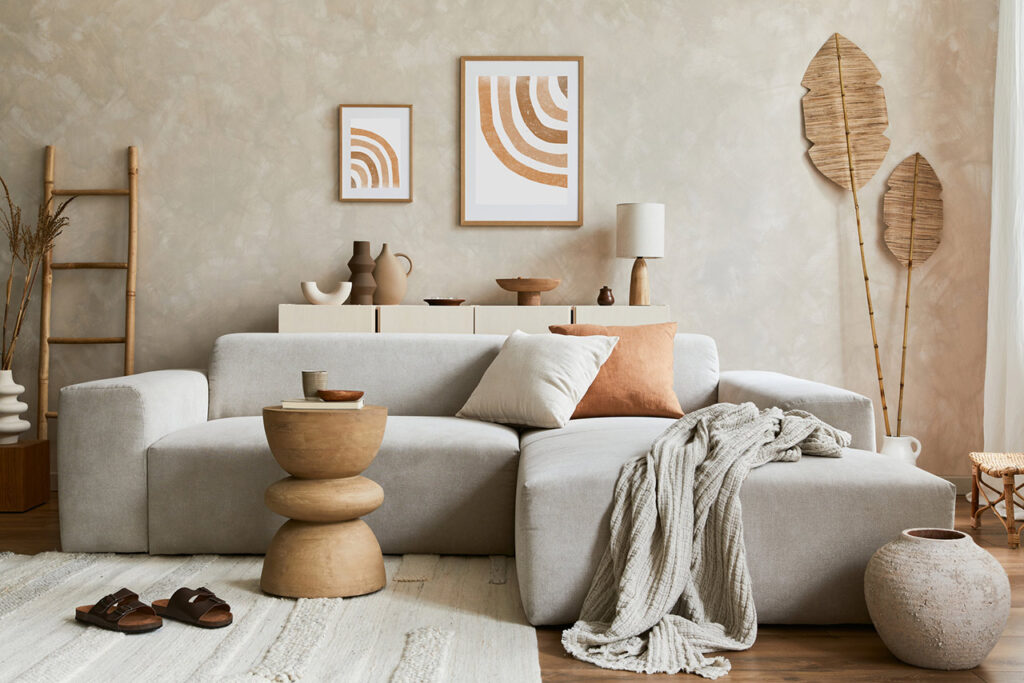From Drab to Fab: Transforming Your Living Room into a Cozy and Chic Oasis

Table of Contents Show
Table of Contents
- Choosing the Right Color Palette
- Furniture Selection and Arrangement
- Layering Textures and Materials
- Lighting the Living Space
- Adding Personal Touches and Accessories
- Space Layout and Flow
Choosing the Right Color Palette
The color palette you select for your living room sets the tone for the entire space. Whether you prefer calm neutrals or vibrant hues, choosing colors that reflect your style and make the room feel welcoming is essential. A balanced color palette can influence the ambiance and functionality of the living room. Consulting with an interior designer Newmarket ON, can provide valuable insights into selecting the perfect colors that match your aesthetic. One example is when a skilled designer can assist you in comprehending the psychological influence of colors and how to utilize them to establish a specific atmosphere. Soft, muted tones can evoke tranquility, while bold, saturated colors can infuse energy into the space.
Furniture Selection and Arrangement
Selecting the right furniture is critical to creating a comfortable and functional living room. Please consider the dimensions and proportions of your items to guarantee they are suitable for the area. For instance, a large sectional might dominate a small room, but a compact sofa can maintain an open feel. A well-arranged room facilitates conversation and movement, making the living room a pleasant place to gather. Consider focal points and arrange seating to take advantage of these elements. Additionally, flexible furniture like nesting tables or stools that can be moved around easily can enhance the versatility of your living room.
Choosing Multifunctional Pieces
Versatile furniture has the potential to transform small living spaces completely. Consider sofas with built-in storage, ottomans that double as coffee tables, or foldable chairs that can be tucked away when unused. These pieces help maximize space without sacrificing comfort or style.
Layering Textures and Materials
From soft textiles like throws and pillows to hard surfaces like wood and metal, layering different elements can create a warm and inviting atmosphere. Mixing materials brings a dynamic contrast to your decor. Various textures, such as combining a velvet couch with a knit throw or a rustic wooden coffee table with metal accents, can make a space more engaging and sophisticated. Don’t be afraid to experiment with unexpected combinations—like leather, linen, or marble and rattan—to achieve a curated yet cozy look.
Using Natural Elements
Consider incorporating wood, stone, or even plants to add a touch of nature. These elements can create a serene and earthy feel that is perfect for relaxing spaces. Mix these natural materials with plush textiles for a well-rounded and inviting look.
Lighting the Living Space
Lighting greatly influences the functionality and ambiance of your living room. Mixing ambient, task, and accent lighting produces a layered look that improves the room’s atmosphere. Strategically placed lighting can highlight architectural features and create a cozy environment. A mix of light sources at different levels can make a small living space feel larger and more welcoming. For example, you could use overhead chandeliers for general illumination, floor lamps for reading, and wall sconces to add visual interest and highlight artwork.
Choosing the Right Fixtures
Sleek, modern lamps can provide a contemporary feel, while antique chandeliers can add a touch of vintage elegance. Dimmer switches are another great addition, allowing you to adjust the light levels to suit various activities and moods.
Adding Personal Touches and Accessories
Personal touches make your living room uniquely yours. Include sentimental items or ones that show your personality, like family photos, art pieces, or travel souvenirs. Items such as rugs, cushions, and decorative pieces can enhance the space with charm and personality. Think about creating vignettes – small, curated displays of your favorite objects – to add visual interest and tell a story about who you are. Collections of books, vases, or even vintage finds can be arranged artfully on shelves or tables to add substance and style to your living room.
Balancing Personal Style and Cohesion
While personal touches are essential, ensuring these elements contribute to an overall cohesive look is crucial. Choose accessories that complement the room’s color palette and style to create a harmonious, well-designed space. For example, if your living room has a bohemian vibe, look for eclectic and colorful pieces that enhance this style.
Space Layout and Flow
Ensuring your living room has a good flow is essential for comfort and usability. Consider the room’s layout to facilitate easy movement and access. Arrange furniture to create designated areas for different activities, which can help maintain an organized space. For example, a reading nook with a cozy armchair and a floor lamp can be a delightful addition to a living area. Thoughtful arrangements can make small living rooms more functional and visually appealing.
Creating Zones within the Living Room
Designating specific areas for different activities can improve the functionality of your living room. For instance, create a media zone centered around the TV, a conversation zone with comfortable seating, and a reading zone with adequate lighting. Rugs and furniture arrangement can help define these zones clearly and make the space more organized.





Responses